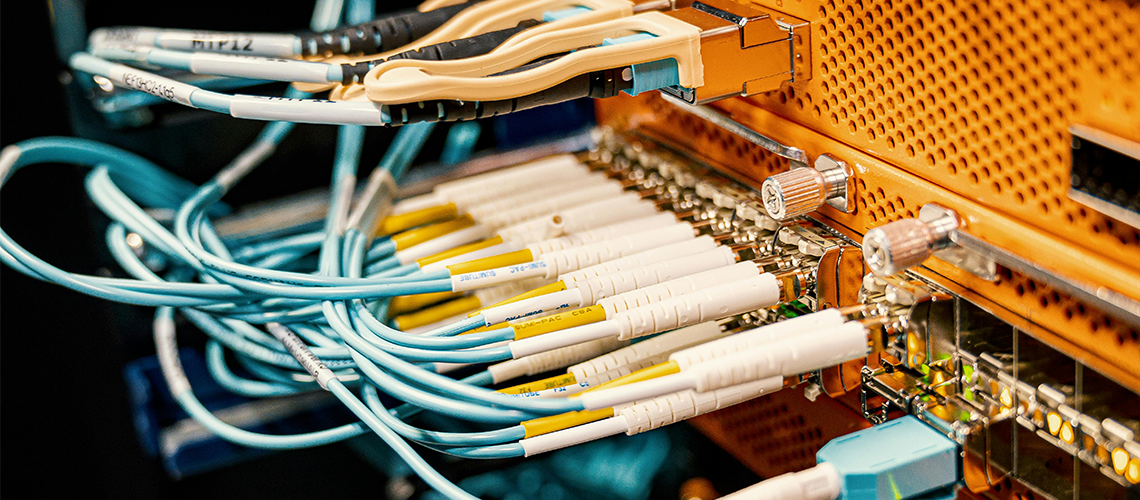
Planning network cabling installation is crucial when building or upgrading a network infrastructure. Whether it is a small office, a big company, or a data center, careful planning ensures the ability of these operations to maximize efficiency, be scalable, and deliver service reliability. In this guide, we will discuss the 5 key questions to ask your service provider that can help you have an efficient installation process. From evaluating your current needs to anticipating future growth, assessing these questions will help establish a solid and resilient network infrastructure.
Determining Technical Cable Capacity
The cable capacity in a network installation process is important as it greatly influences the design’s capability, scalability, and reliability. When choosing a suitable cable type, it is important to assess its properties based on the following factors.
- Assessing Data Transmission Requirements
Evaluating the data transmission requirements includes determining the network’s present and future needs to set the fixed capacity, pace, and reliability of data transmission. Thorough evaluation of data transmission requirements allows organizations to develop and deploy networks that will fulfil the needs of their users, applications and processes.
- Choosing Between Copper and Fiber Optic Cabling
Choosing between copper vs. fiber optic cabling is one of the major challenges while installing a network. The choice must be considered based on properties such as bandwidth requirement, distance limitation, cost, and deployment requirements.
- Exploring Different Categories of Copper Cabling
Copper cabling for network installation must explore different data categories to find the more appropriate option to meet the network’s data transmission requirements. By choosing the various ways of copper cabling, the network installers can pick the particular cabling that suits their data transmission requirements, budget constraints, and environmental considerations.
Fiber Optic Cabling: Benefits and Considerations
Fiber-optic cables have a much higher bandwidth capacity than traditional copper wires, enabling faster data communication and networks with greater capacity. They can transmit data long-distance without signal degradation, which makes them suitable for connecting far away places. It has low weight and high durability characteristics, ensuring quick installation and resistance to external forces. In addition to establishing fiber optic cabling network infrastructure, this approach guarantees expansion with future technologies and huge data.
Single Mode vs. Multimode Fiber Optic Cabling
Using single-mode or multi-mode fiber optic cabling in a network installation depends on the distance, bandwidth needs and available budget. Single-mode fiber gives us a better option for long-distance transmission with larger bandwidth, thus making it better for long-haul applications but at a higher price. However, multimode fiber is the more budget-friendly model when used mostly for low-bandwidth applications within short distances.
Choosing the Right Fiber Optic Solution
Selecting an appropriate fiber optic solution ensures maximum performance and reliability, providing high-speed data transmission with less signal loss. With the right fiber optic solution in hand, you can support the prospect of future growth and tech-related progressions, which guarantees long-term investments for your business. Additionally, customized options in accordance with precise needfulness guarantee cost-effectiveness and the adequate use of resources.
Evaluating Environmental Factors
Assessing the environmental factors is an essential prerequisite for lasting and highly reliable network infrastructure performance during installation. For instance, temperature, humidity, electrical interference, and physical blocks are a few of the factors that may contribute greatly to the degradation of equipment and communication signal networks. By evaluating these environmental variables, network installers can establish proper security and optimize network productivity by deploying appropriate measures. Environmental aspects played a multi-faceted role in improving the operation and boosting the life span of the network. They also made the infrastructure so solid and resilient that it can readily cope with the pressure of modernized communication.
Impact of Location on Cabling Requirements
The effects of cabling in location from new network installation are comprehensive and multidimensional. Different variables determine the kind of cable and the required number, including the size of the place, its layout, environmental conditions, and the regulations. For example, you may need to run longer cables and add more distribution points to accommodate larger premises, requiring a careful plan to make efficient connectivity. Severe environmental factors, like very hot or humid weather, may result in the necessity of using special cables elevated to his ruggedness and strength. Additionally, the adoption of local building codes and industrial standards is imperative for selecting and installing cables to guarantee performance and safety needs.
Selecting Cabling for Challenging Environments
Selecting proper cabling for the tough spots during network installation is a priority in delivering well-run communication systems. Cables with high resistance to severe conditions like extremely hot or cold temperatures, moistness, and physical stress are developed to reduce the probability of signal loss caused by degradation or downtime. By investing in strong cabling solutions uniquely designed to meet environmental requirements, an enterprise can withstand interruptions and ensure no compromises in its operations, even under the most difficult circumstances.
Prioritizing Health and Safety
Ensuring health and security in network installation is critical to protecting technicians and users. By implementing proper safety steps, workers avoid accidents, injuries or contact with hazardous substances during equipment installation. In addition, adequate ventilation and the ergonomic design of working spaces contribute significantly to a long-term risk reduction associated with equipment exposure and repetitive tasks. Health and safety issues aim to protect individuals and ensure productivity and efficiency in network installation projects.
Importance of Fire-Retardant Cabling
Fire-resistant cabling is a key component in building systems that strive for safety and accident reduction. Using wires made from fireproof materials with stops or barriers to limit fire spread, fire-retardant cables decrease the chance of fires spreading and causing significant damage to property and lives.
Compliance with Construction Product Regulations
Compliance with the construction industry regulations is crucial to prevent health risks and increase the integrity of construction materials and their products. Safety, quality, and reliability. Tight regulations are important tools for manufacturers and suppliers because these laws make them responsible, instil confidence in consumers, and contribute to the quality of the construction industry.
Future-Proofing Your Network Infrastructure
It is vital for future-proofing your network infrastructure to harness all the new technological trends, including growing data demands and new business requirements. Building and preparing your network for the future implies creating an infrastructure that can be transformed and modernized smoothly, supporting innovation and development trends. Investing in the network infrastructure of the future may require up-front investment, but it will bring about long-term cost savings through the reduction of frequent upgrades, downtime, and maintenance.
Balancing Short-Term Savings with Long-Term Investments
Short-term reduction in network installation investments, while being away for immediate cost-effectiveness, may also limit sustainable scalability. Putting short-term savings first will prevent you from spending huge amounts of money in the long run.
Considerations for Future Speed and Data Requirements
Planning for future speed demands and data needs during installation is necessary for scale and flexibility in the network. A clear understanding of future requirements allows for the creation of infrastructure and technologies that can support growing data volumes and faster networks. Through advance planning, companies may dodge the expense of disruptive network upgrades, facilitating smooth expansion and optimization of network capability with the increased demand. With this immediate approach, the network will remain healthy and capable of satisfying business requirements.
Trust Cabling Drops for Optimal Cabling Solutions
Cabling Drops is your go-to provider for top-class network cabling installations. With our dedication to renowned quality and willingness to customize services to meet the specific needs of our customers, we strive to provide seamless connectivity. We are staffed with experienced technicians qualified to do professional installations at standards agreed upon in the industry and using the most modern technology available. Entrust Cabling Drops with your network infrastructure transformation that will happen with accuracy, proficiency, and professionalism. Schedule your consultation via our website today!
FAQs
Q.1 How do I determine the technical capacity of the cable I need?
To determine a cable’s technical capacity, you must evaluate the following factors.
- Bandwidth requirement
- Type of cable
- Signal integrity
- Compatibility
- Transmission distance
Q.2 What data transmission speeds do I need for my network?
The required data transmission speed for a network is dependent on various criteria, such as:
- Number of connected devices
- Data usage of the activities
- Scalability
Q.3 What must be considered when installing network cabling?
Some of the factors to consider when installing network cabling include:
- Cable length and type
- Regulatory compliance
- Environmental factors
- Wiring certification
- Future scalability
- Cable management
Q.4 Why is fire-retardant cabling necessary?
Fire-retardant cabling is necessary to prevent or delay fire spread in buildings and structures. These cables are designed to resist ignition, combustion, and the propagation of flames, reducing the risk of fire-related damage and casualties. They also help maintain critical communication and power systems during emergencies.
Q.5 Why should I trust Cabling Drops for my network cabling solutions?
Cabling Drops is an established and reputed cabling solution provider since 1986 with a successful record for offering the most high-quality tailored solutions for each client’s unique needs.
